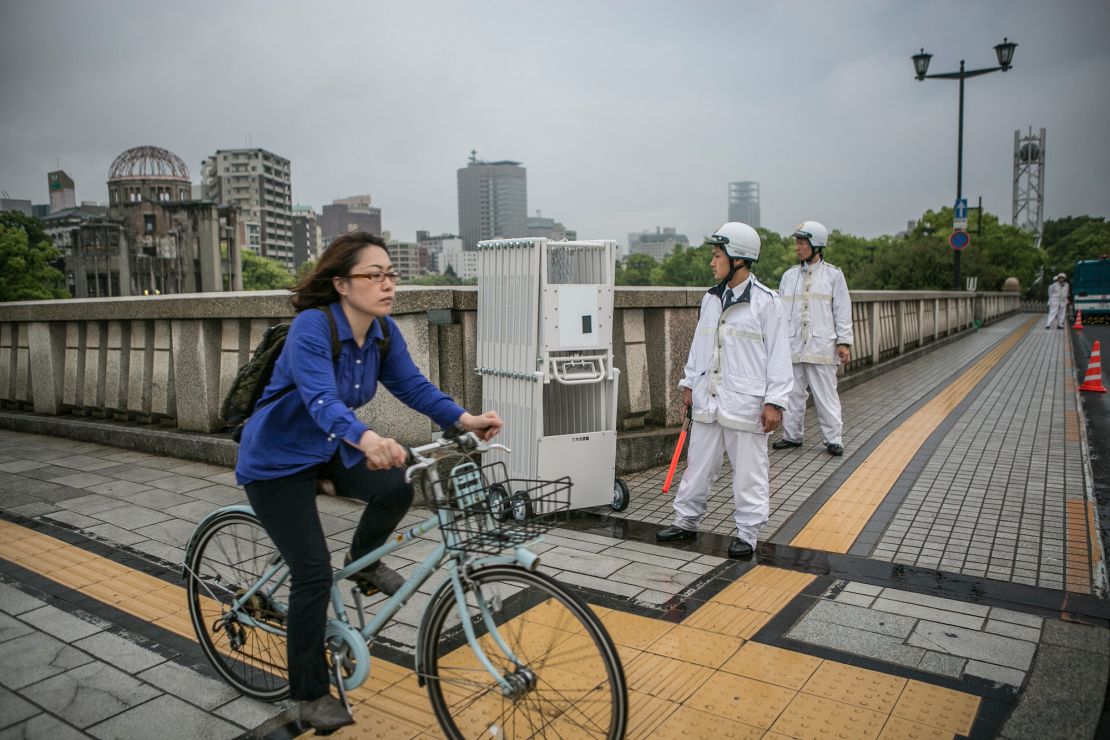More than seven decades after the United States dropped an atomic bomb on the Japanese city of Hiroshima, effectively ending World War II, President Barack Obama is set to become the first U.S. president in history to visit the site of the attack on Friday.
The president’s visit shines an even brighter spotlight on what’s already one of the most popular tourist attractions in Japan.
According to figures released in April, nearly 1.5 million people visited the Hiroshima Peace Memorial Museum in 2015 – the year that marked the 70th anniversary of the atomic bombing.
Obama visits Hiroshima
The number of international visitors has risen by 44.6 percent to 338,891 – a record high.
According to the figures it’s the fourth straight year of growth, an increase of 104,531 international visitors over 2014.
A report by Hiroshima Peace Media attributes the increased popularity among foreigners to a number of factors.
“The [Hiroshima Peace Culture Foundation] believes that the museum’s high ranking on a travel website added momentum to the increase, in addition to the rising number of international visitors to Japan,” says the report.
“Another big factor was the World Scout Jamboree, a worldwide event for Boy Scouts, held in Yamaguchi Prefecture last summer. About 27,000 participants of the event visited the museum.”
Though not specified, that “travel website” is likely TripAdvisor.
It currently lists the Hiroshima Peace Memorial Museum as the country’s number two attraction, behind Miyajima Island, also located in Hiroshima prefecture.
According to the museum’s website, it will be closed the afternoon of May 27 due to the U.S. president’s visit.
Hiroshima atomic bomb site one of the country's most popular attractions
Inside the Hiroshima Peace Memorial Museum
The Hiroshima Peace Memorial Museum opened 10 years after the attack, which killed an estimated 140,000 people.
Visitors come to bear witness to preserved burnt wreckage, painful survivor testimonies and human shadows left permanently visible after the atomic bomb explosion’s incandescent destruction.
Some describe Hiroshima as a gripping, educational and emotional example of “dark tourism,” “grief tourism” or “battlefield tourism,” which includes Nazi concentration camps in Europe, Cambodia’s torture prison and killing fields, and West African slave ports, as well as the Nagasaki Peace Park and Atomic Bomb Museum.

The latter site memorializes the events and devastation surrounding the second atomic bomb dropped on that Japanese city three days after the Hiroshima bombing.
Most tourists gaze in mute awe at Hiroshima’s Atomic Bomb Genbaku Dome, which became a UNESCO World Heritage Site in 1996.
The now iconic structure, designed in 1915 by a Czech architect, was the city’s Industrial Promotion Hall.
When the United States dropped the bomb on August 6, 1945, it exploded just above the building, but didn’t totally destroy it because the immediate blast and heat buffered the air at ground zero.

























